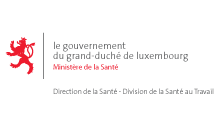Christian Gheorghe grew up in Romania, behind the Iron Curtain. In the 80s, he would bootleg vinyl LPs smuggled from the west, and when he first heard Pink Floyd’s The Wall, he realized the west offered far more than his government led him to believe. “I didn’t know English, but I was trying to understand it,” he says. “I heard ‘Another Brick in The Wall.’ And ‘Run Like Hell.’ And I really started to wonder: ‘What’s going on here?’ It really shaped my desire to seek freedom.”
In the early days of the Romanian revolution, he escaped to the U.S., where fate dropped him into the world of “predictive analytics” software — tools big businesses use to analyze their financial data so they can better understand how they’re performing and what the future might hold. As the market consolidated around behemoths such as IBM, Oracle, and HP, Gheorghe’s analytics outfit was sold to SAP, and he served as an SAP chief technology officer for three years. But after leaving the software giant in 2009, he realized that the world’s data offered far more than traditional analytics software led you to believe.
As an entrepreneur in residence at Silicon Valley venture capital firm Greylock Partners, Gheorghe set out to “democratize” analytics software — to give more people access to more information than was traditionally available from software sold by the likes of Oracle, HP, and, yes, his previous employer. It’s a mission whose roots he traces all the way back to his college days in Romania. “I really think it has to do with my upbringing in a communist country,” he says, “and trying to come here for freedom.”
The result is Tidemark, a Greylock-backed outfit that made its official debut on Monday night. Based in Redwood City, California, just south of San Francisco, Tidemark offers an online analytics service that taps not only traditional databases, but also unstructured data gleaned from the web at large. Available from ordinary web browsers, the service is meant for the average business worker — not just IT departments — and it provides access to a much larger swath of information than old school analytics software.
“Traditional business intelligence systems were designed for data that existed in a database somewhere,” Gheorghe says. “Now, probably 90 per cent of the data you need is unstructured. It’s in Twitter streams and Facebook posts or LinkedIn updates, and all that needs to be analyzed in near real-time.”
Gheorghe’s upbringing aside, it’s a familiar pitch. Pundits everywhere are hailing the “consumerization” of enterprise IT, as tablets and smartphones and web services slowly circumvent the IT department. And in the tech world, you can’t turn around without someone mentioning “unstructured data.” An army of “NoSQL” databases promise to store all the data you can’t stuff into a traditional SQL database, and countless companies are offering to analyze such data with platforms along the lines of Hadoop, the open source distributed number-crunching platform bootstrapped at Yahoo.
In recent months, even the big name IT outfits — including Oracle and Microsoft — have started pitching “unstructured data” products and services. Tidemark is riding the same wave, offering yet another service built atop Hadoop.
The Limo to Business Analytics
But for Ben Horowitz, it was Christian Gheorghe’s upbringing that sold him on Tidemark. When Gheorghe sought additional funding for his company, he sat down with Horowitz, the man who founded the venture capital firm Andreessen Horowitz alongside Netscape father Marc Andressen. Gheorghe began describing the software itself, but Horowitz wanted to hear about his background first. “He told me about growing up in Romania and then escaping to New York and then doing construction work and then working his way up to the software business, and I said: ‘OK, I’m investing.’”
Gheorghe arrived in New York from Romania in 1989, and in addition to doing construction work, he drove a limo. One evening, he drove a man from Connecticut back down to Manhattan, and though he tried time and again to make conversation, the man wouldn’t bite. “It was typical New York. He wouldn’t talk to me. He just wanted to get to where he was going,” Gheorghe remembers. “But I just wanted to learn the language, so I kept talking.” Eventually, Gheorghe told the man that he’d studied computer science and electrical engineering, and that what he really wanted a way into the software business. When they reached Manhattan, the man gave Gheorghe a business card and suggested they talk.
His name was Andrew Saxe. In 1991, Saxe and Gheorghe co-founded Saxe Marketing, a company that offered a relational database specifically for marketing campaigns, and they eventually sold the outfit to credit reporting behemoth Experian. Gheorghe’s next venture, Tian Software, did predictive analytics. In 2005, Tian was acquired by OutlookSoft, a competing outfit, and in 2007, OutlookSoft was folded into SAP.
With Tidemark, Gheorghe drew on his experience with Tian and OutlookSoft and SAP, but at the same time, he looked to replace them. “We did a lot of interesting things at OutlookSoft, and SAP does very well with it right now, but we wanted to move beyond the SQL database approach,” he says.
Acosta — a 20,000-employee sales and marketing outfit headquartered in Jacksonville, Florida — has used OutlookSoft since 2004. But over the past few months, it’s been testing an early version of Tidemark’s service. Acosta’s treasurer, Sean Anthony, who oversees the project, sees it as a step out of the past.
With OutlookSoft, Anthony would create Excel-based reports that were then distributed to company executives, sometimes through a Citrix virtual desktop, sometimes in ways that were even more “clunky” — to use his word. “I found myself constantly creating one-off spreadsheets and emailing them to the execs,” Anthony tells Wired.
As a web-based application hosted on Terremark’s Enterprise Cloud service, Tidemark is something execs can access from ordinary desktop or mobile browsers — Gheorghe showed it to us on an iPad — and to a certain extent, those execs can build their own financial reports, covering everything from budget planning to financial forecasting. “We can actually put analytics into the hands of our senior executives,” Anthony says. “They go to CNN and Yahoo and Google for financial information from outside the company. We want the financial information inside the company to work the same way.”
The application pulls data from traditional ERP (enterprise resource planning) systems as well as unstructured data not only from Twitter and Facebook and other public web services, Gheorghe says, but it also taps chat clients and random documents stored behind the firewall. “Tidemark is built for the cloud. We have an elastic infrastructure that favors more data. It behaves better the more you feed it,” he says.
It’s yet to be seen how well all this will work in the real world. Even Acosta is still in the early stages of deploying the application. But the idea is welcome one. And you can surely forgive Christian Gheorghe for believing that more information is always a good thing.
Authors:


















